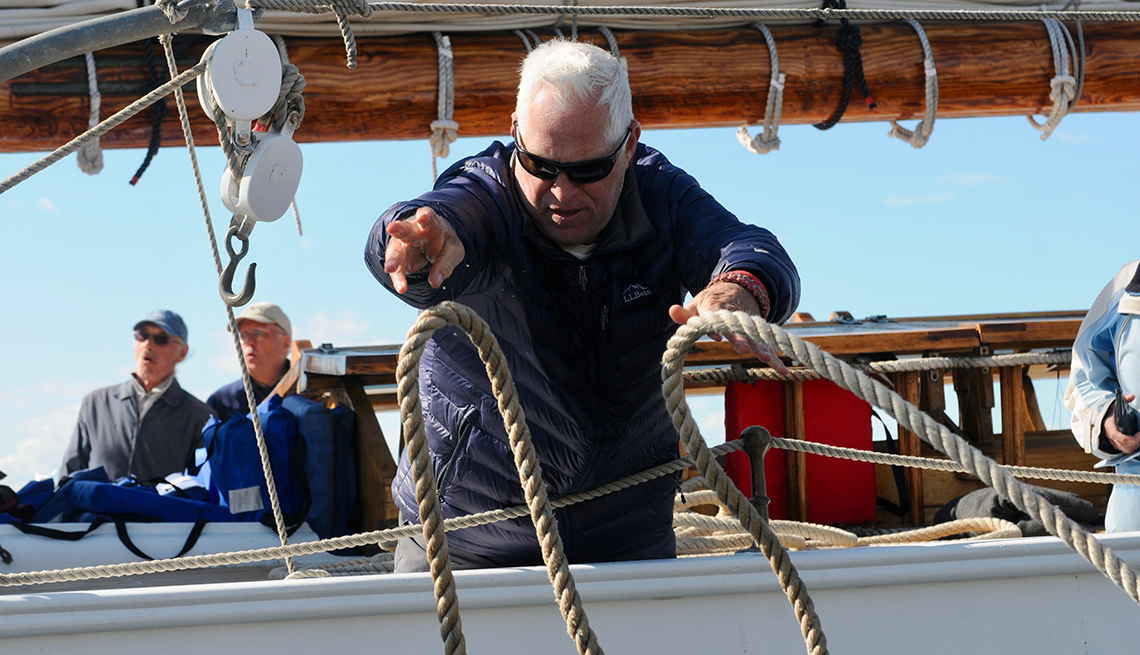
- Select a language for the TTS:
- UK English Female
- UK English Male
- US English Female
- US English Male
- Australian Female
- Australian Male
- Language selected: (auto detect) - EN
Play all audios:
Note that sailing aboard a Maine windjammer differs markedly from modern cruise ships. They're independently owned, carry only 16 to 40 passengers, and sailing is the entertainment.
There are no theaters, casinos, spas or elevators aboard. Stairways are ship-ladder style, which can be difficult for those less nimble. Cabins range from campy to glampy rustic, and only a
few schooners offer en suite options other than running water. A passenger aboard the Schooner Heritage helps raft the schooner to the Stephen Taber. Tom Nangle Our coasting schooner was
launched in 1871 — the oldest documented sailing vessel in continuous service in the United States — and its cabins are cozy and comfortable. Ours was one of six with two twin beds, four
have doubles, and two are singles. All have nice mattresses and linens, as well as a comforter, and an L L. Bean wool throw. I especially liked the bedside reading lamps. "If
you're in it for the cabin, you're not in it for the right reasons. The cabin is for a nap, to lie down for a bit and to sleep at night,” quips Noah Barnes, second-generation
captain of the Taber. “The people who find us are attracted to sailing, adventure, fresh air, good food, perhaps a glass of wine with dinner and music, definitely music.” My fellow Taber
passengers, most of whom are retirees over 50, come from as far west as Colorado, as far south as Georgia. A few are return guests, motivated equally by a love of sailing and the promise of
hearty, delicious food, especially the all-you-can-eat lobster/chicken/steak barbecue highlighting every cruise. One of the pluses of sailing aboard the Taber or its sister Ladona, is that
wine with dinner is included on all cruises. On other windjammers, it's BYOB (bring your own bottle). Equally magical is how fast time flies when you're doing “nothing.” That
nothing includes: volunteering to help raise and lower sails; taking a supervised turn at the wheel; keeping an eye out for seabirds, seals, sea mammals and winking lighthouses; watching
lobstermen haul traps; or simply relaxing with a good book or over a card game with fellow passengers, playing an instrument you brought aboard, or perhaps sketching or taking photos.
I've seen passengers do all that and more. In addition, most schooners anchor for the night either near a remote island or by a fishing village. On our trip, we had a chance to explore
Isle au Haut, an island with a small village and a remote section of Acadia National Park. On other sails, I've poked around Stonington, a lobster-fishing village, and Buck's
Harbor, the village that inspired author Robert McCloskey's beloved children's books One Morning in Maine and Blueberries for Sal. An all-you-can-eat lobster, chicken, and steak
barbecue is a highlight of every cruise. Hilary Nangle









